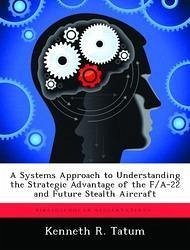The purpose of this thesis is to introduce three concepts into the ongoing debate concerning the procurement of fourth-generation stealth aircraft such as the F/A-22 and Joint Strike Fighter (JSF). Even though an understanding of them is essential for military and civilian policy makers to formulate informed decisions about future aircraft procurement, the following points are frequently absent in discussions of stealth technology. First, advances in stealth technology have shifted it away from a primary to a secondary, although indispensable, aircraft characteristic. Stealth is no longer a stand-alone feature, but an essential system within the entire combat aircraft system. Second, a system of systems that continuously matures, through either evolutionary improvements or the incorporation of other systems, can maintain a continuing margin of advantage over counter-technologies. This statement is particularly true for fourth-generation stealth aircraft. Last, the cost and effort required to counter a system of systems is significantly greater than that required to counter a single technology because an effective counter must defeat multiple components within the system to render it ineffective. Thus, the integration of stealth into an aircraft's system can impose an opportunity cost on adversaries that either exceeds their means or significantly hampers their nation's offensive capabilities. Fully understanding these three concepts and incorporating them into current acquisitions and defense policy debates will more clearly articulate the strategic importance of continuing to develop and employ advanced stealthy aircraft. A failure to acquire these weapon systems will significantly affect America's military capabilities and in turn, the negative strategic impact on the United States will result in a relative strategic advantage for America's adversaries.
Hinweis: Dieser Artikel kann nur an eine deutsche Lieferadresse ausgeliefert werden.
Hinweis: Dieser Artikel kann nur an eine deutsche Lieferadresse ausgeliefert werden.








